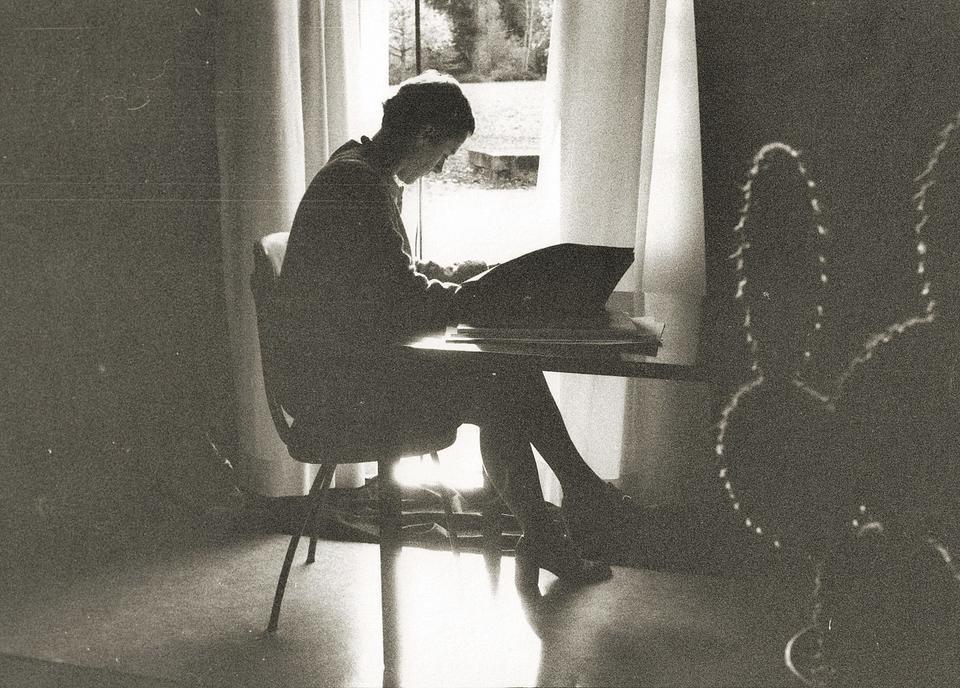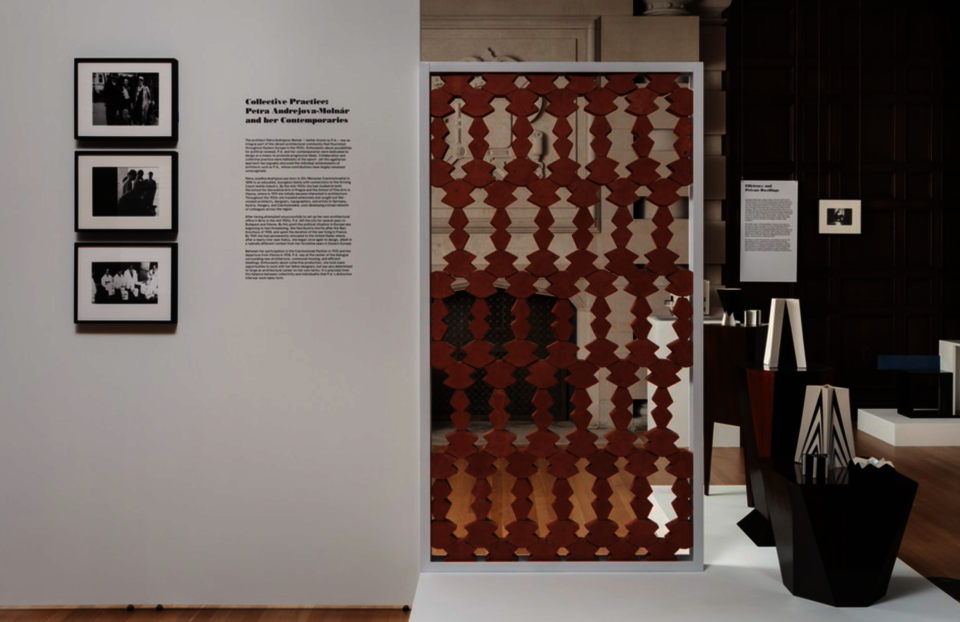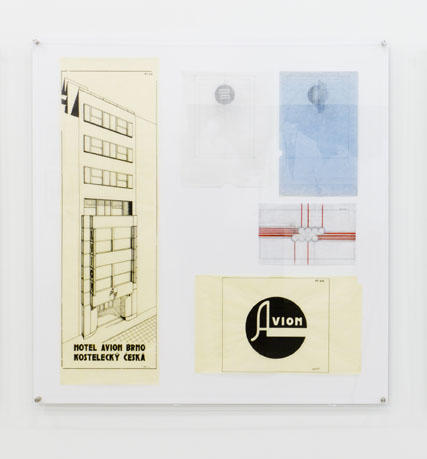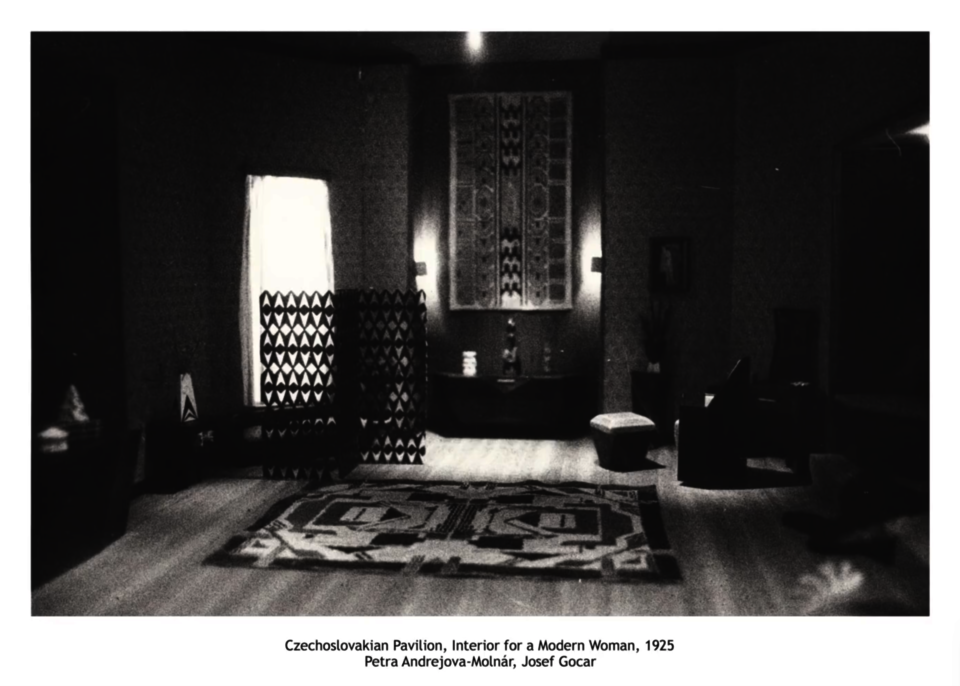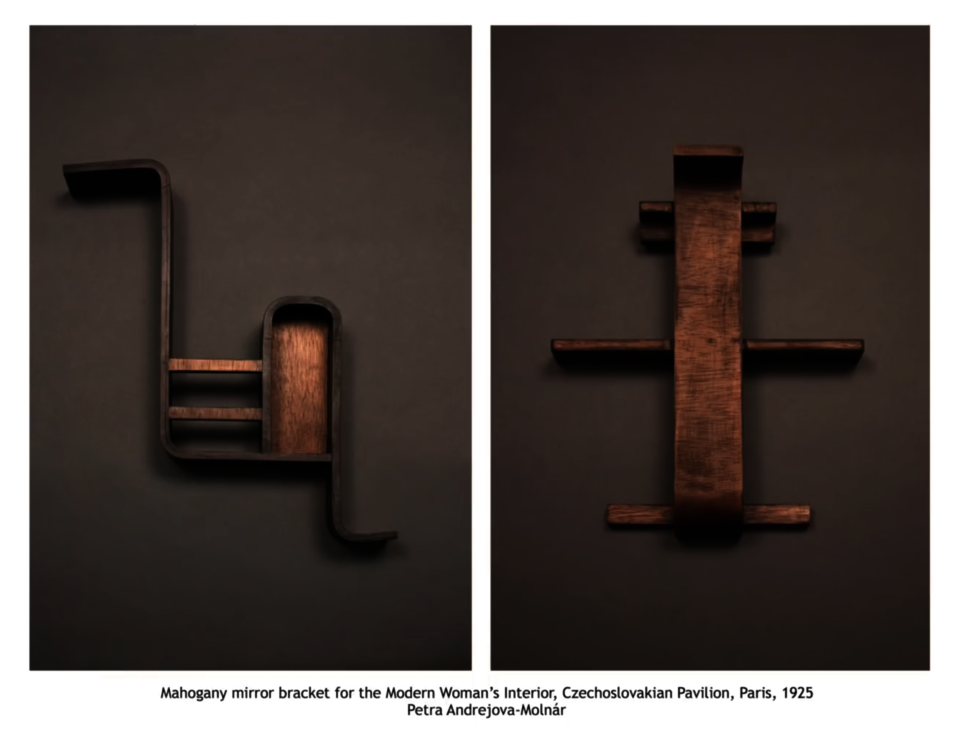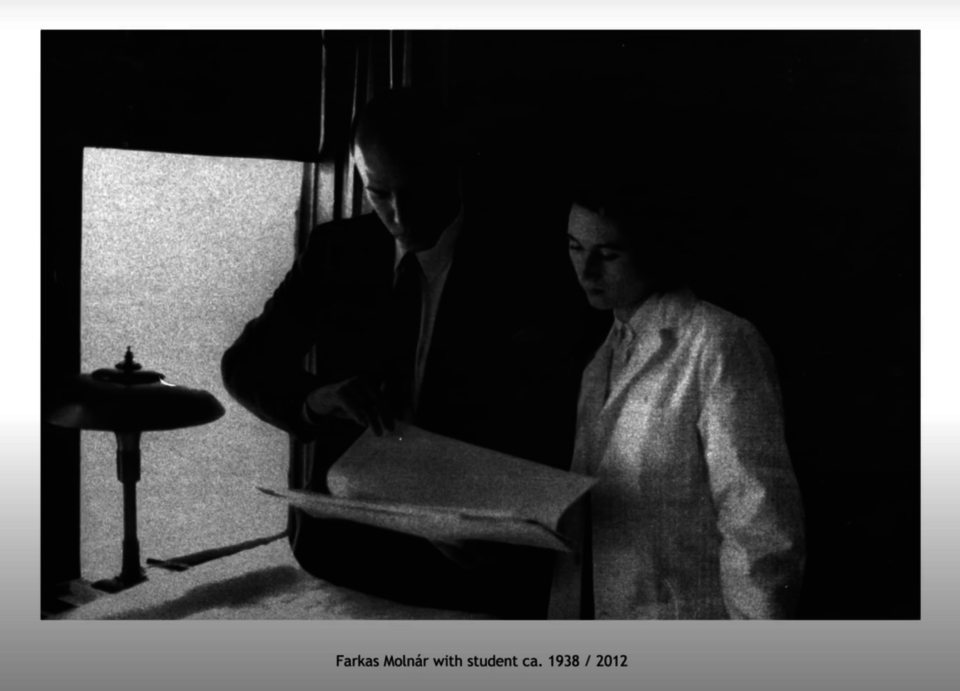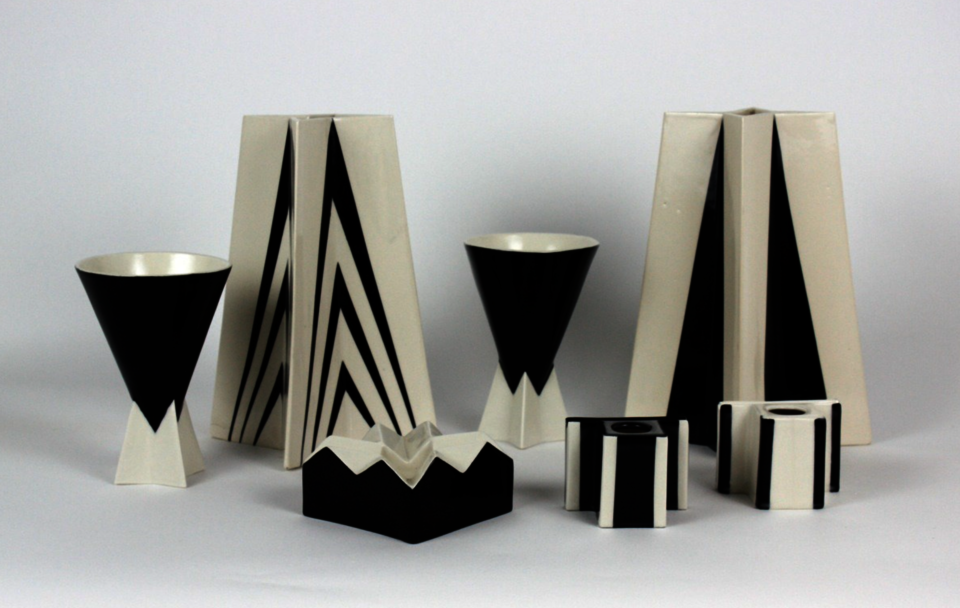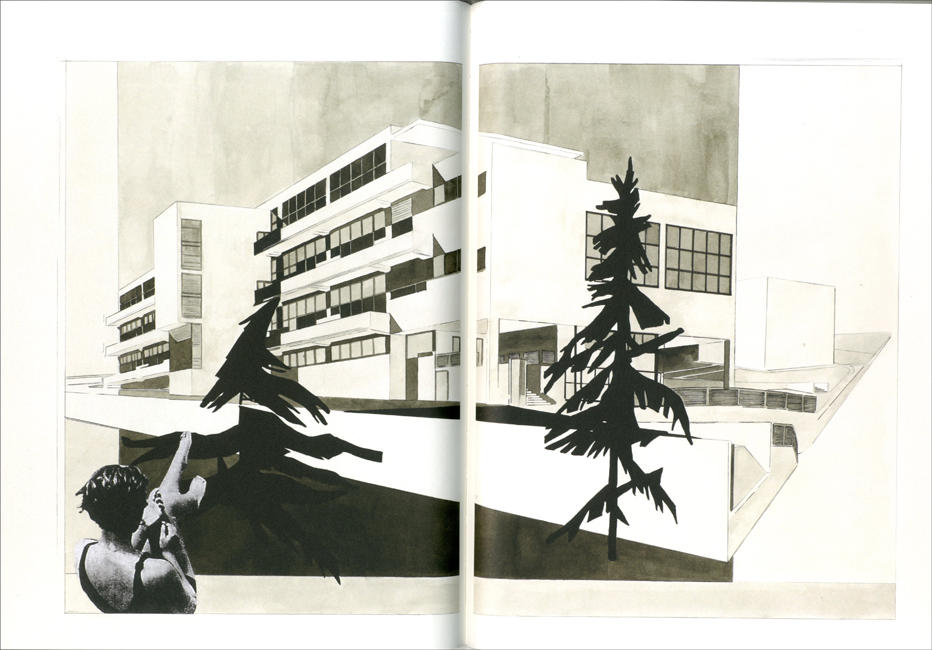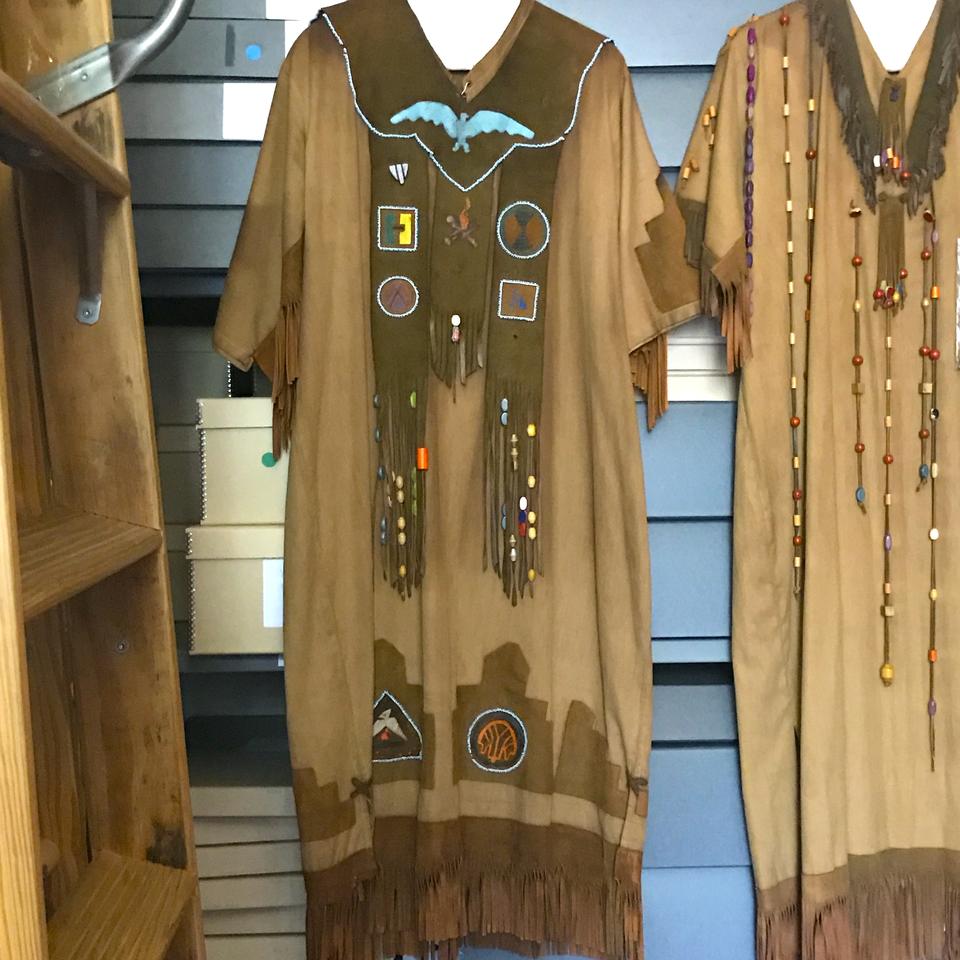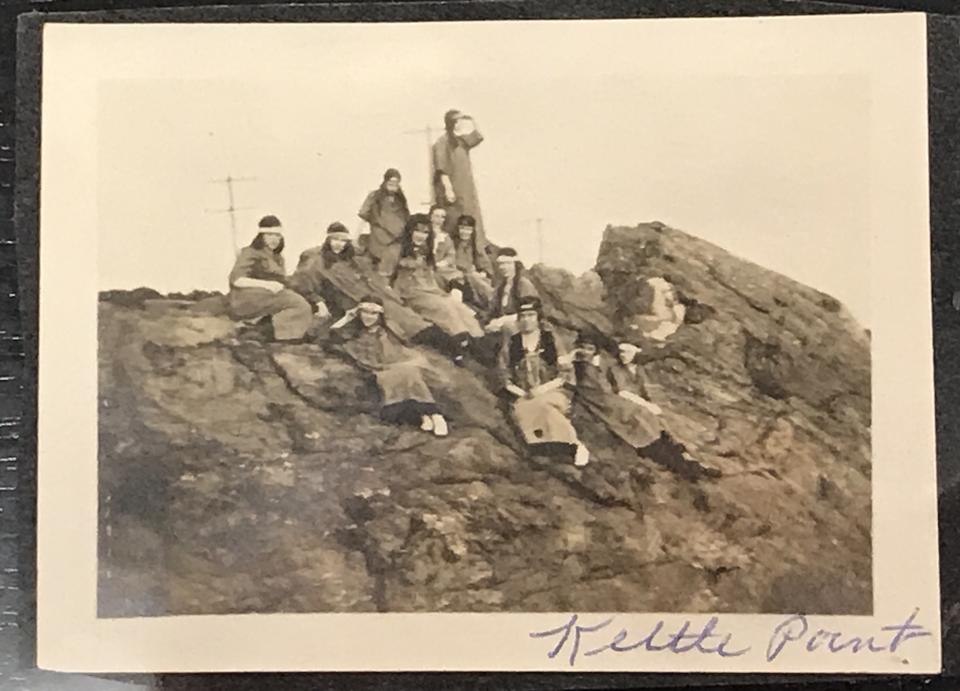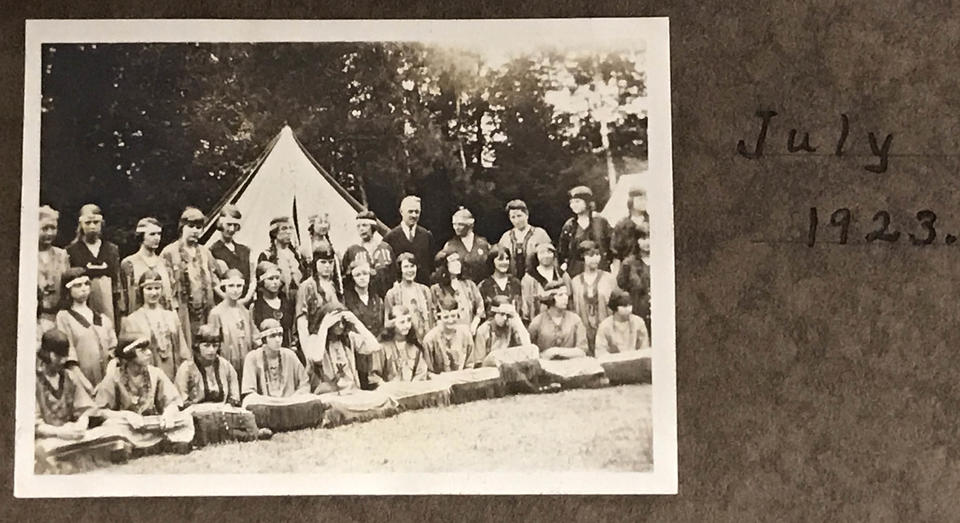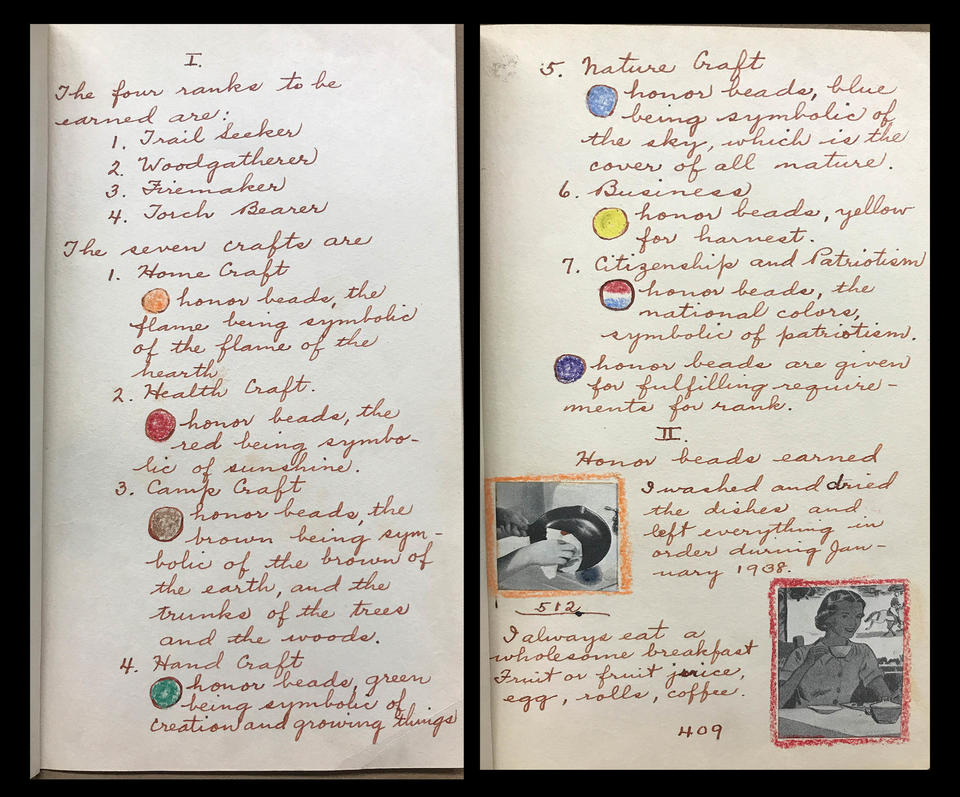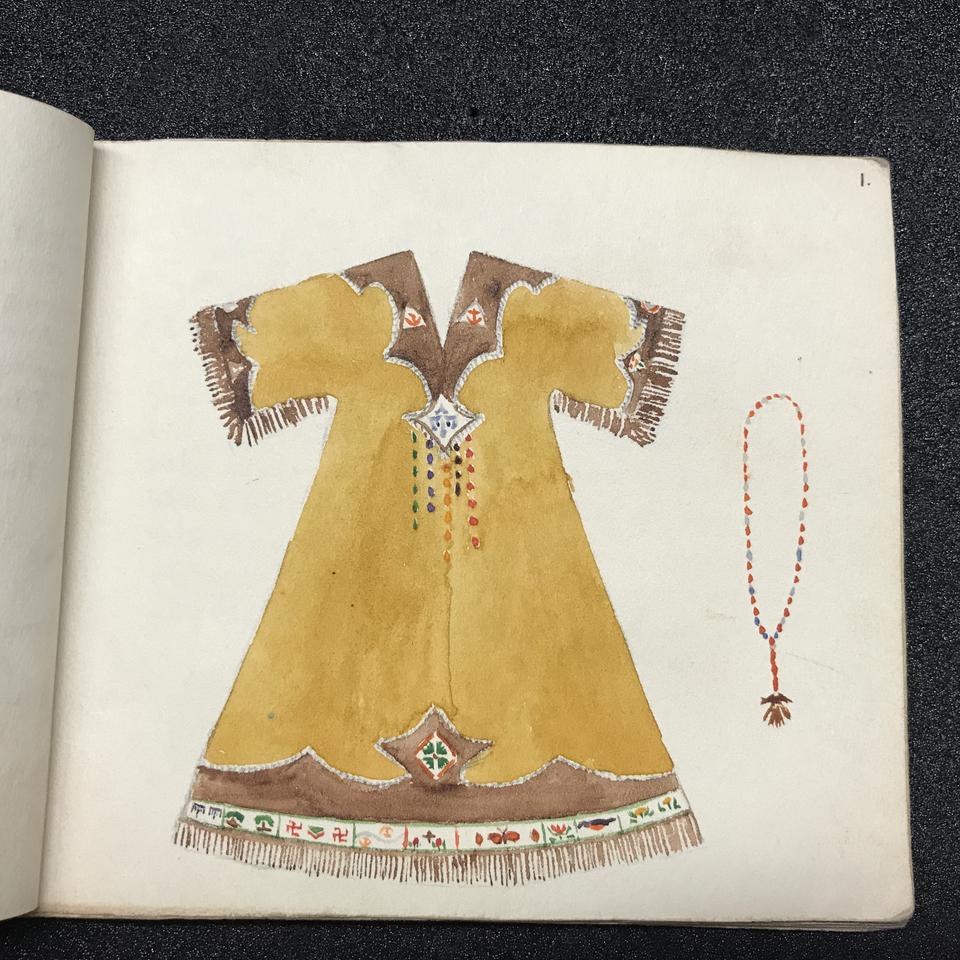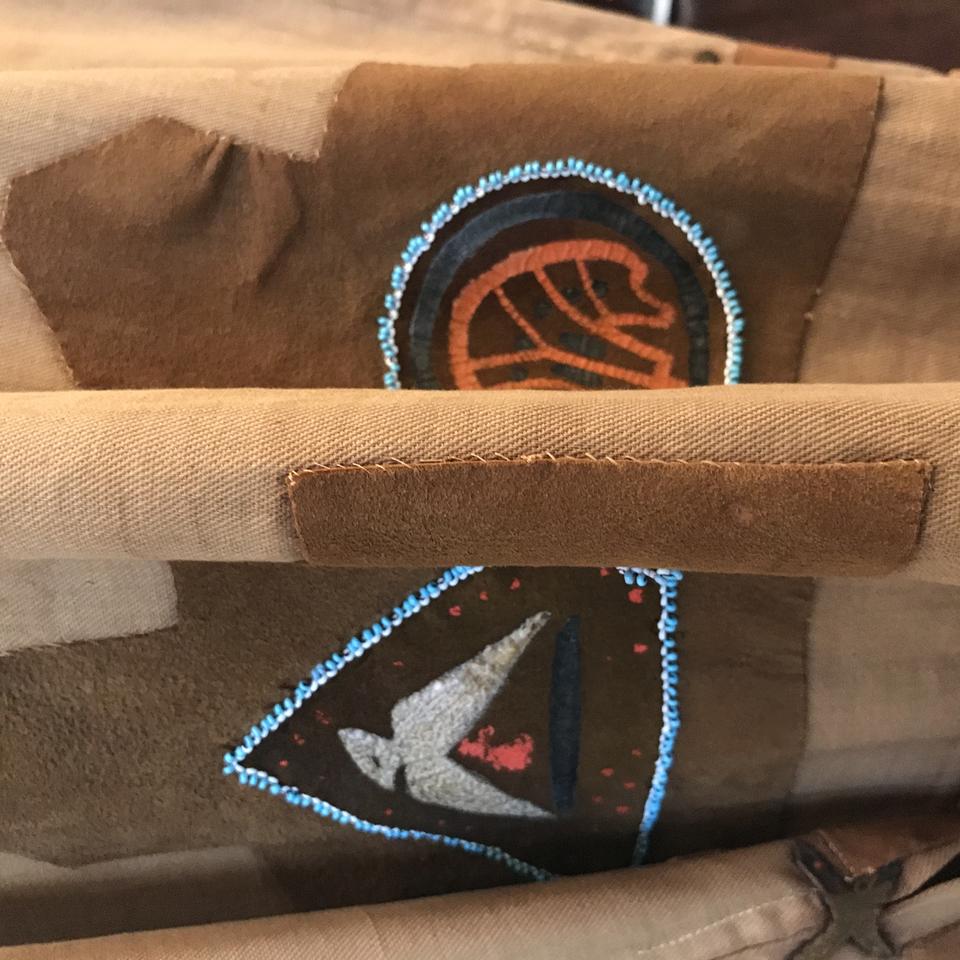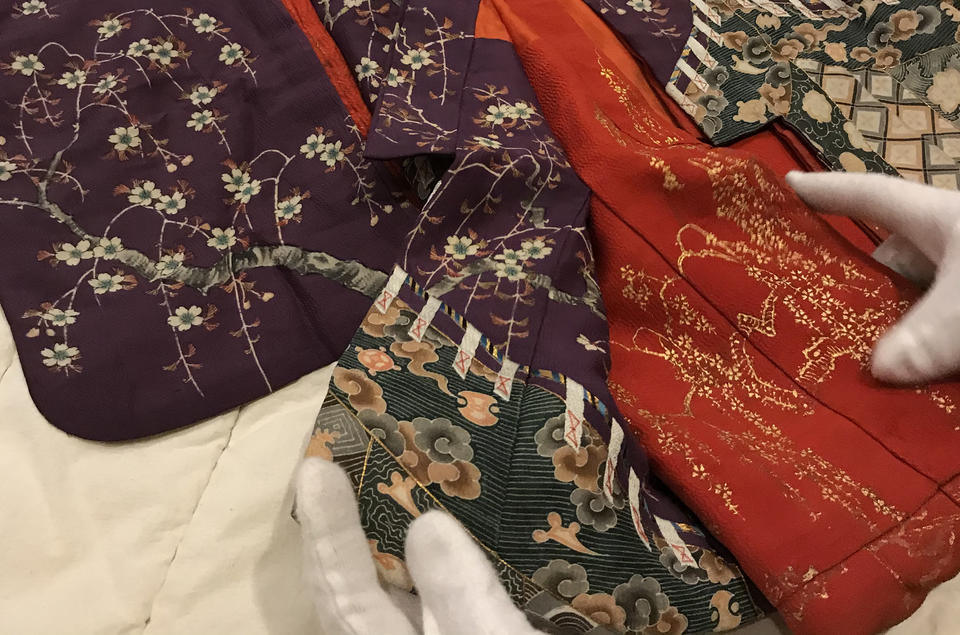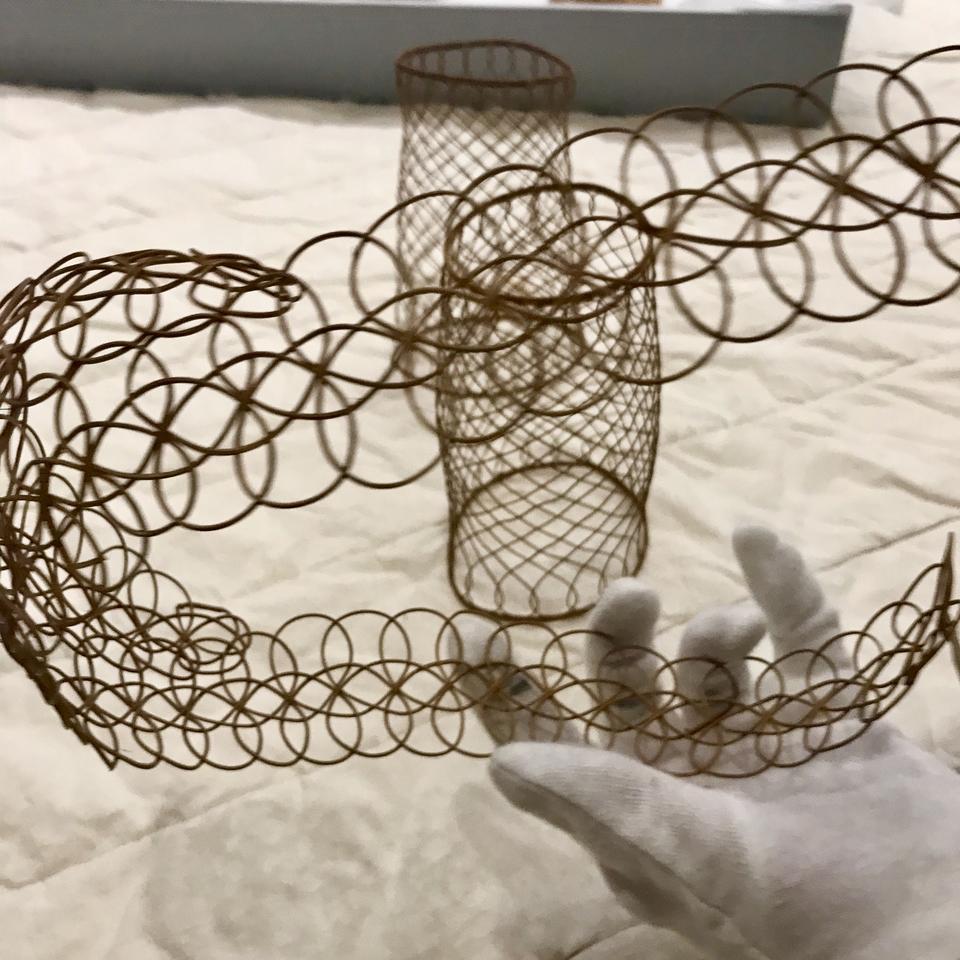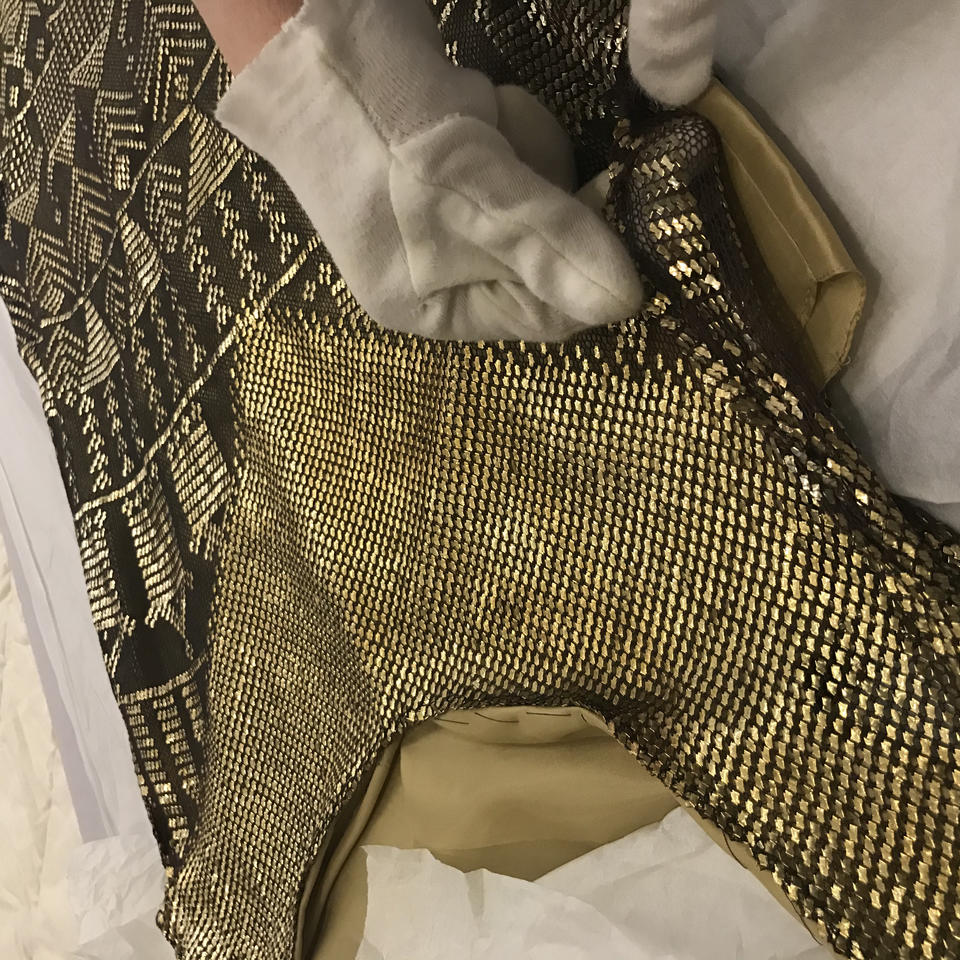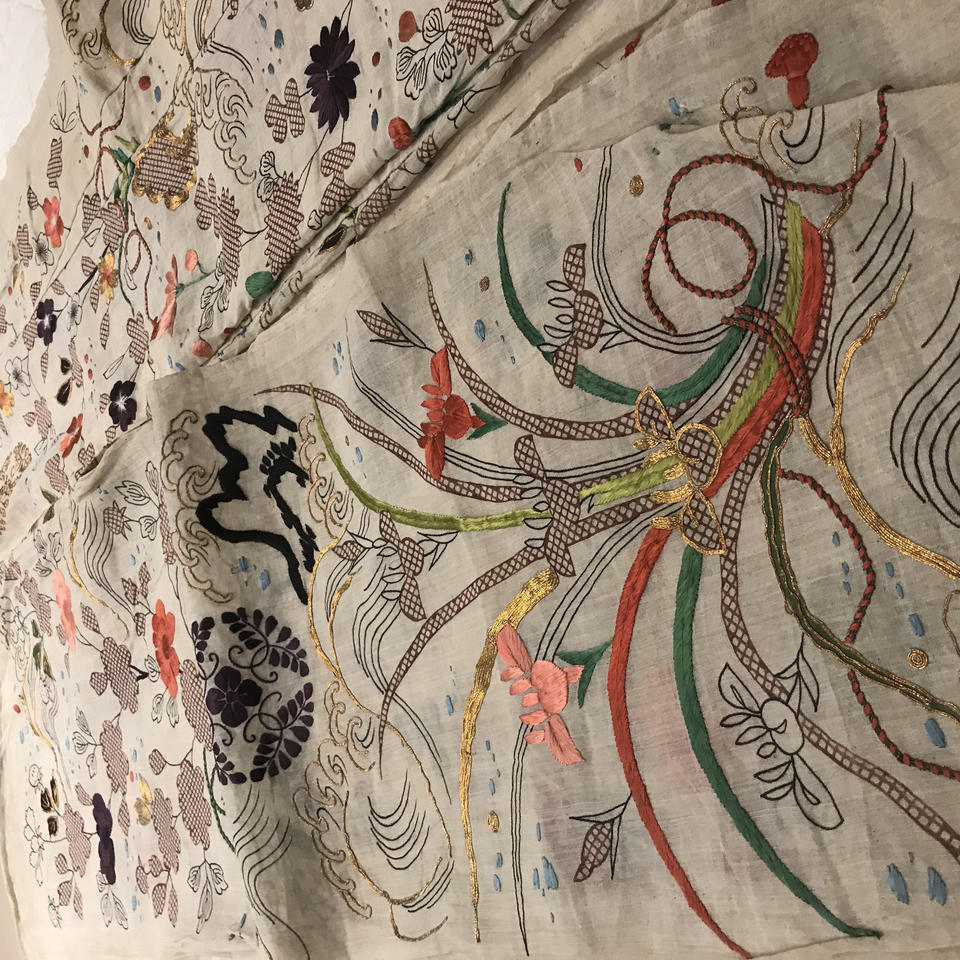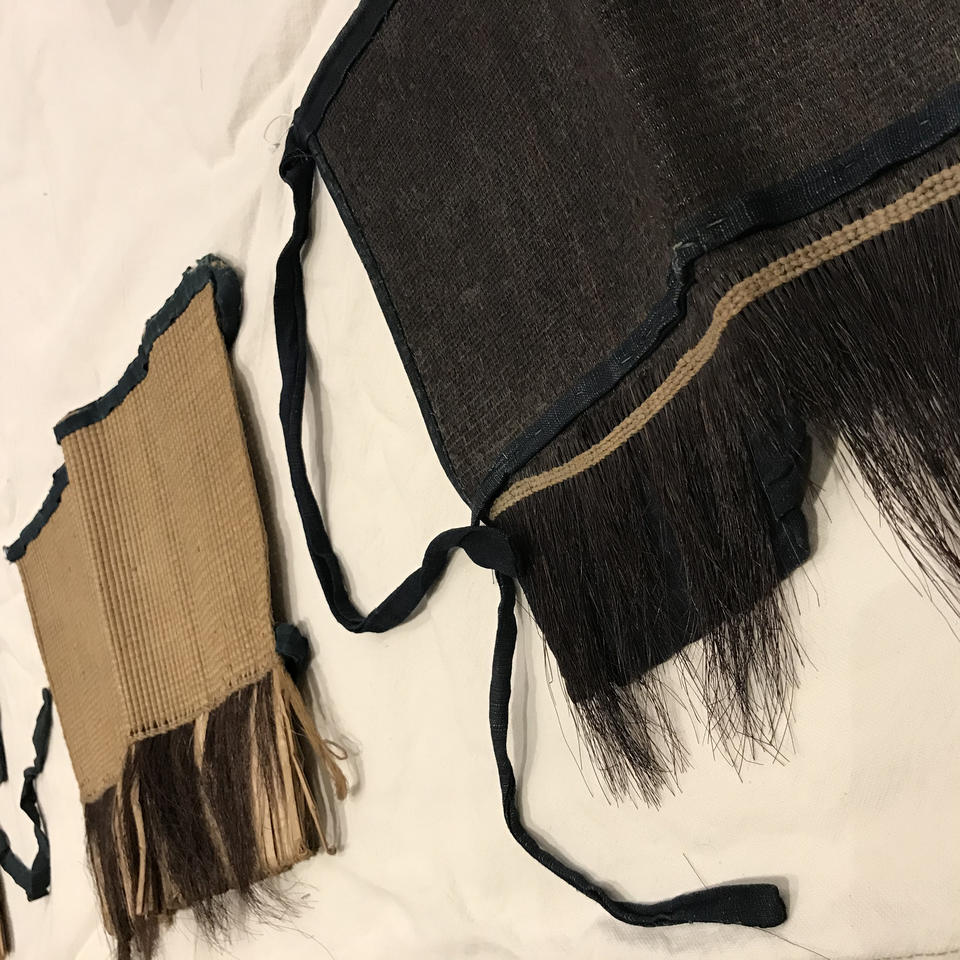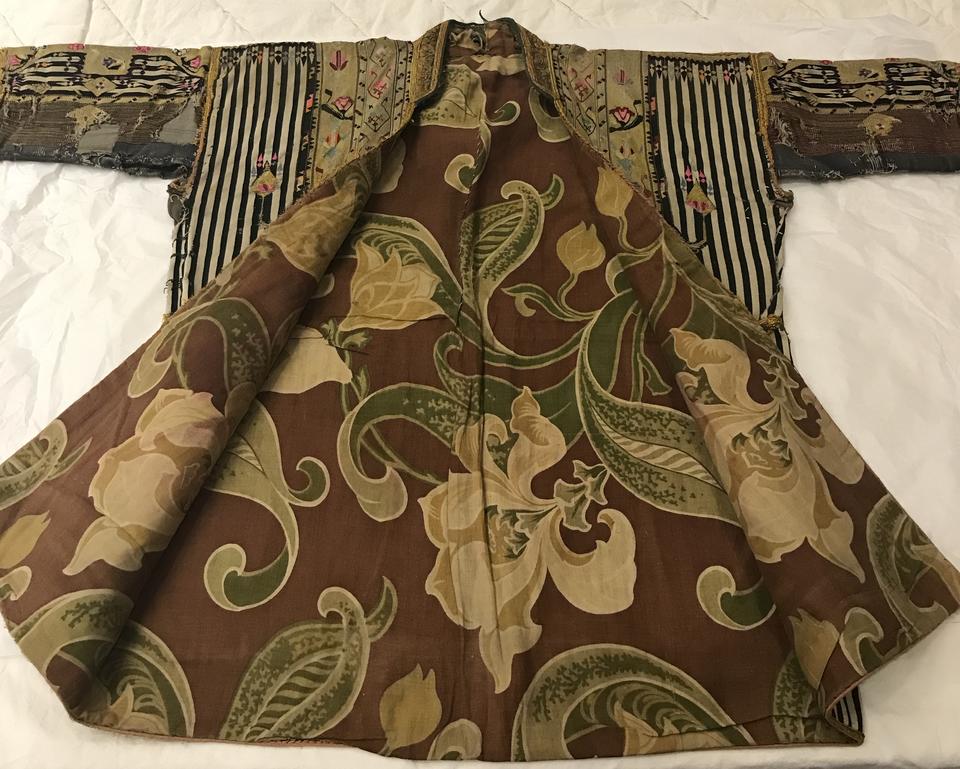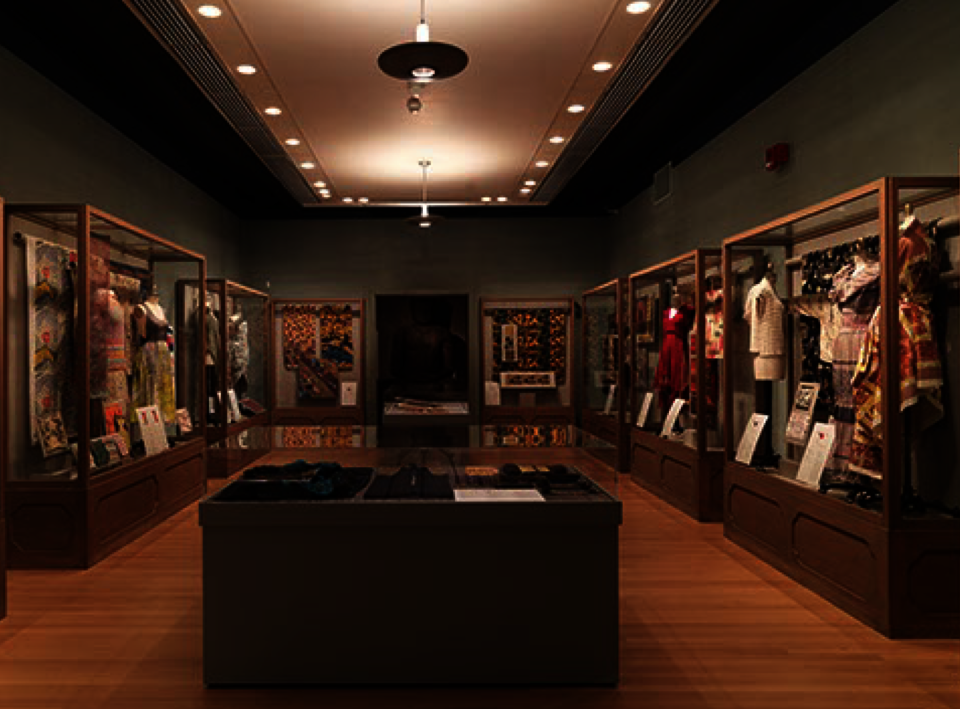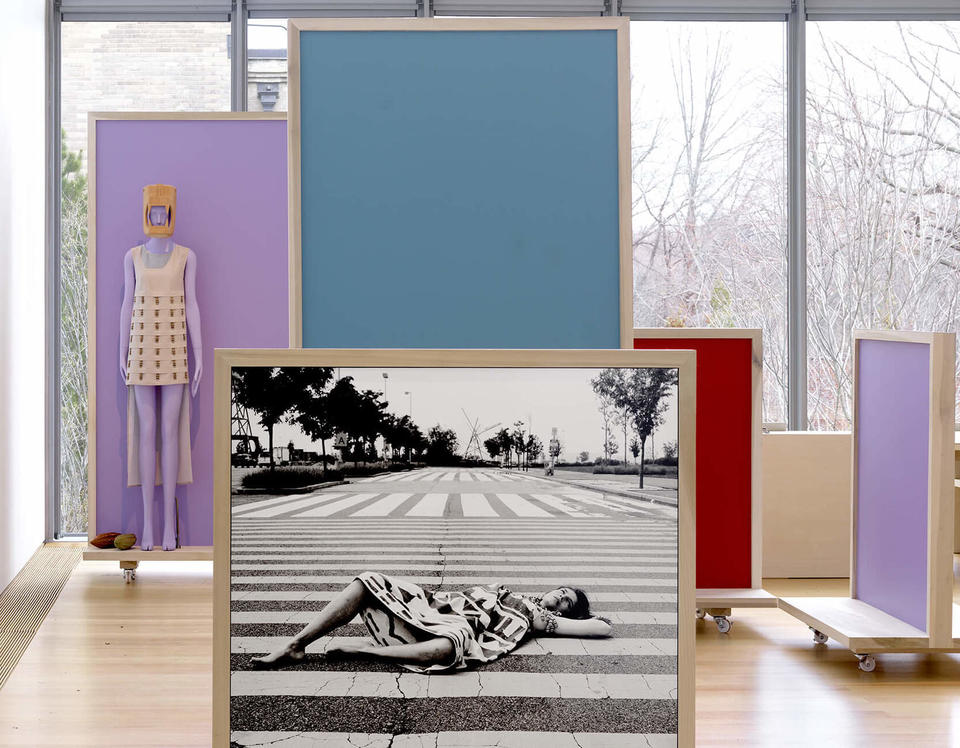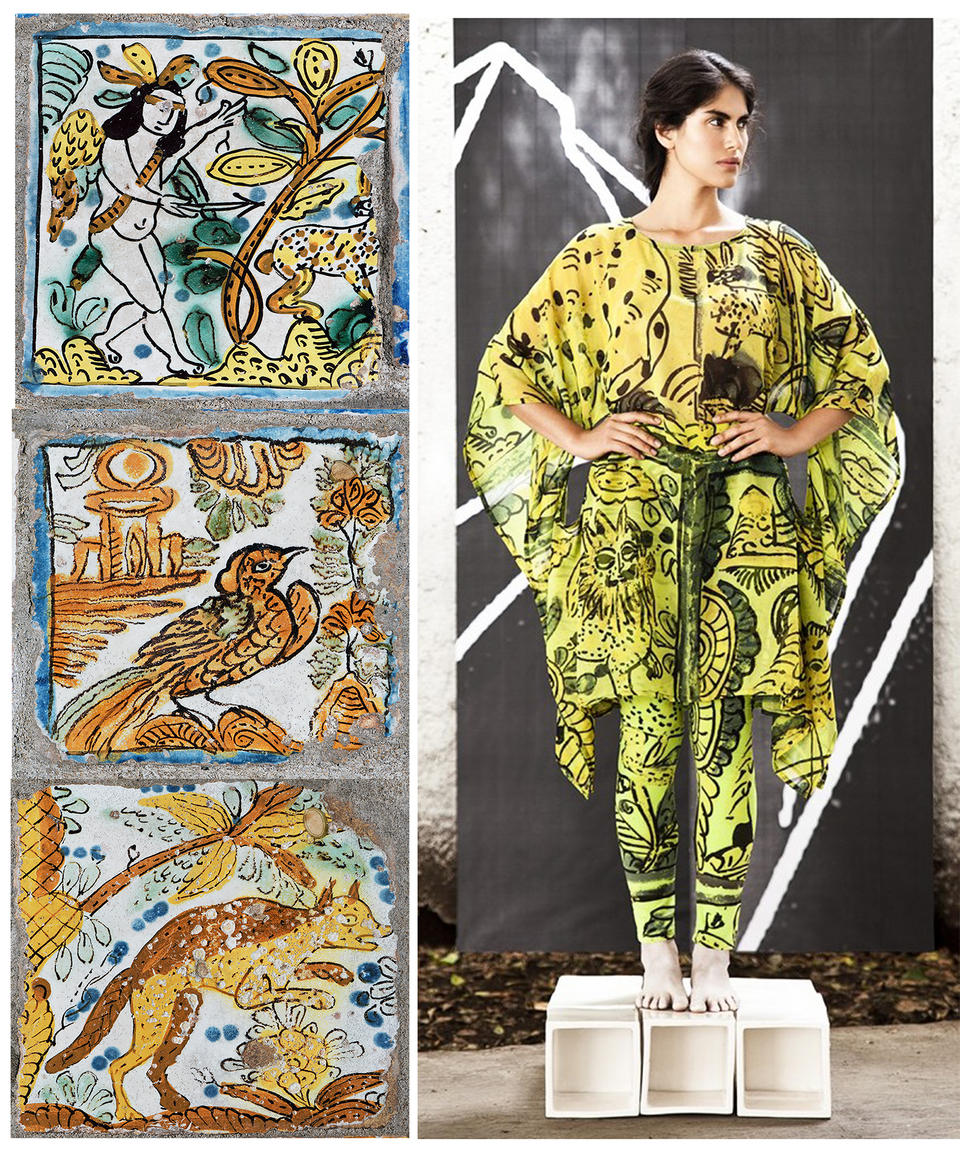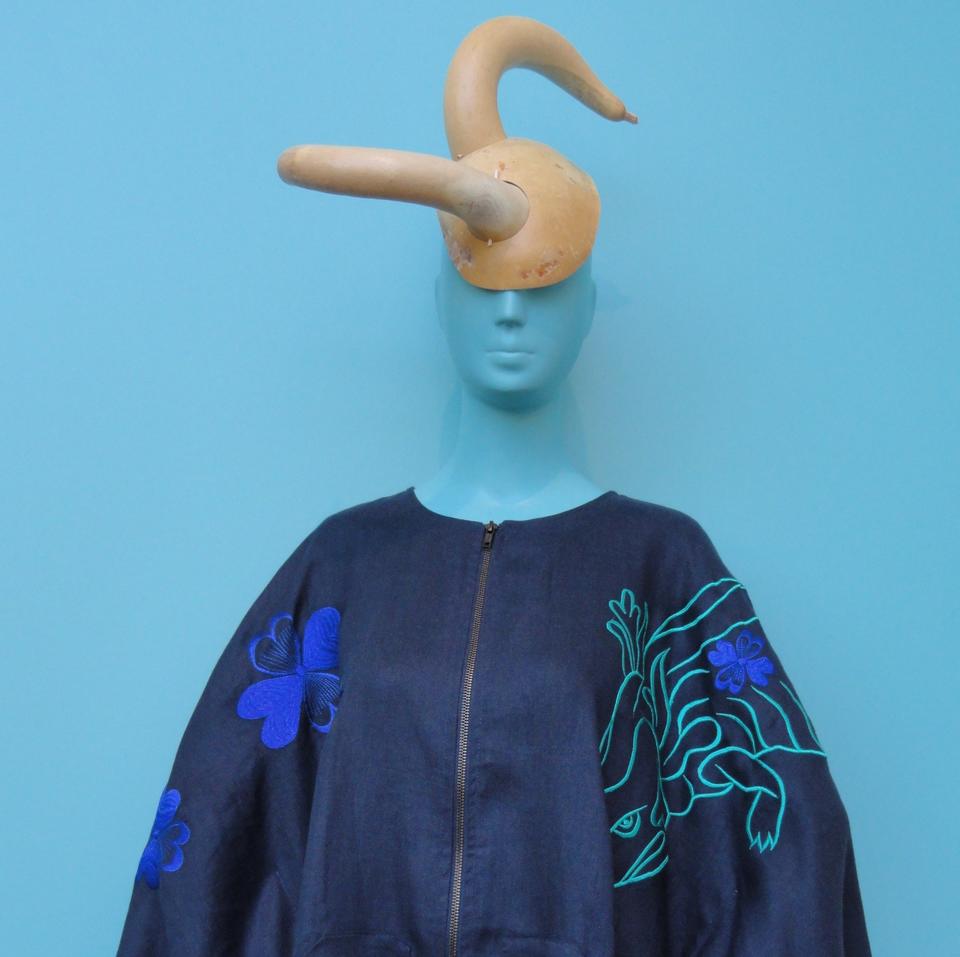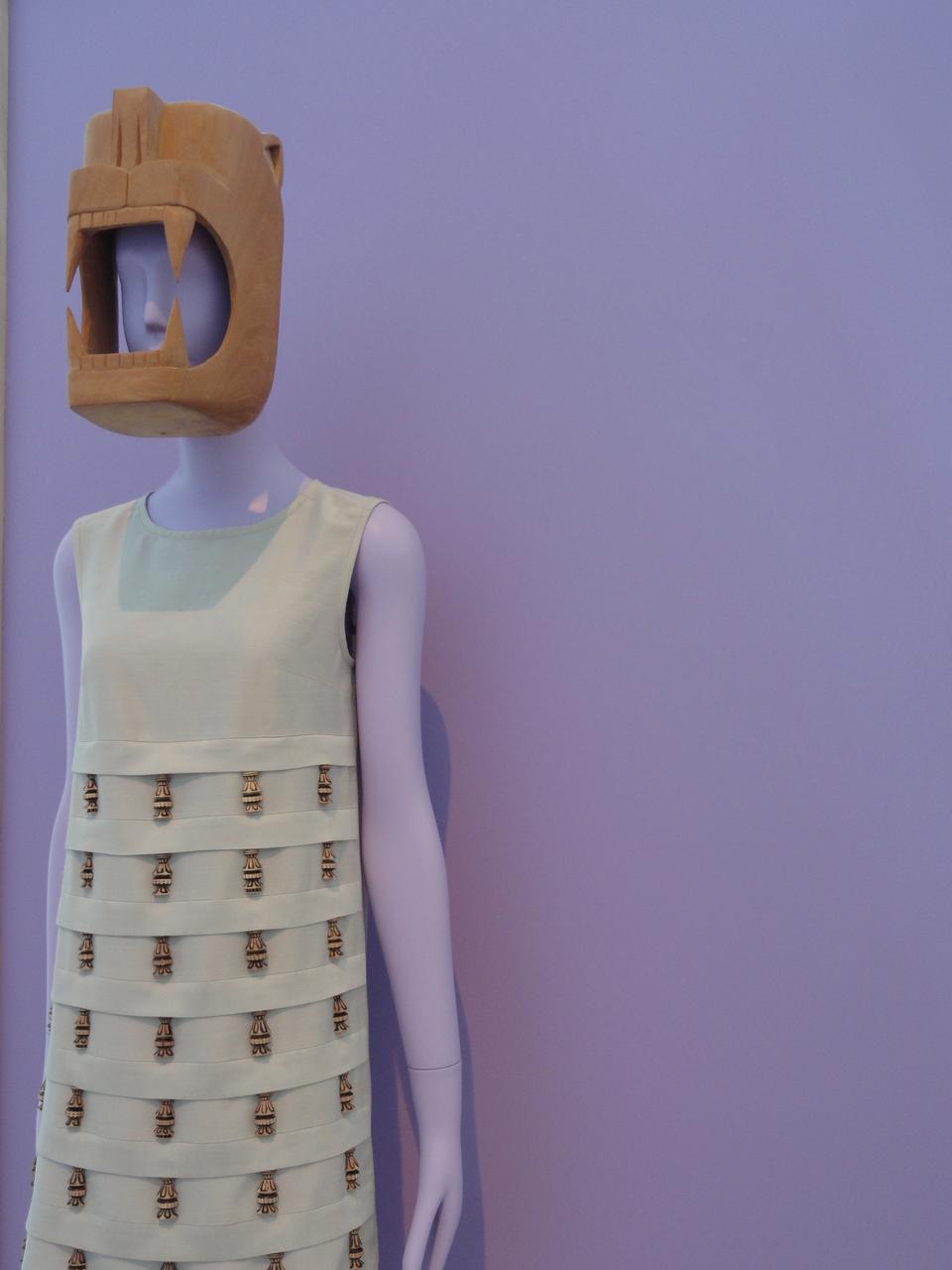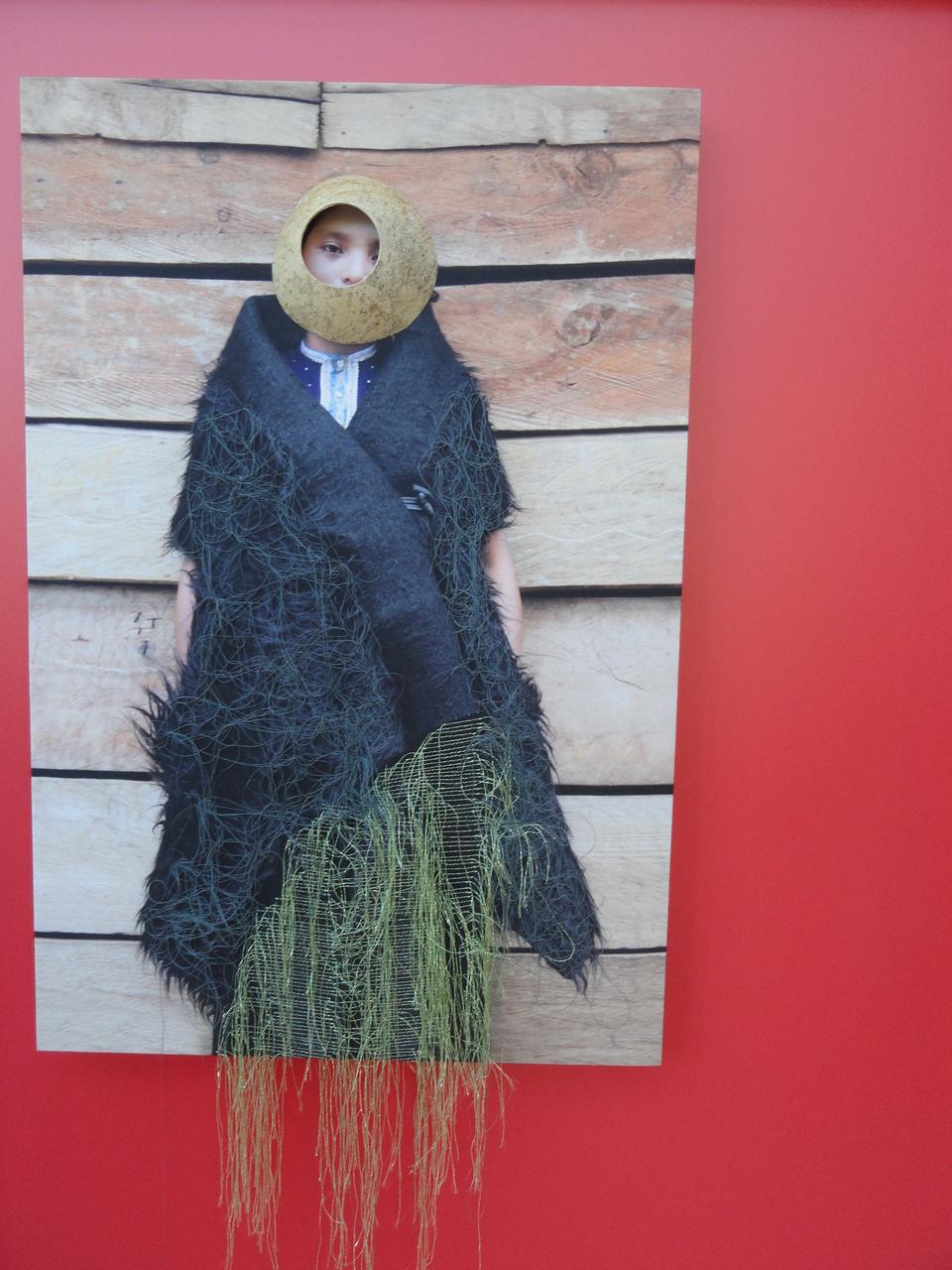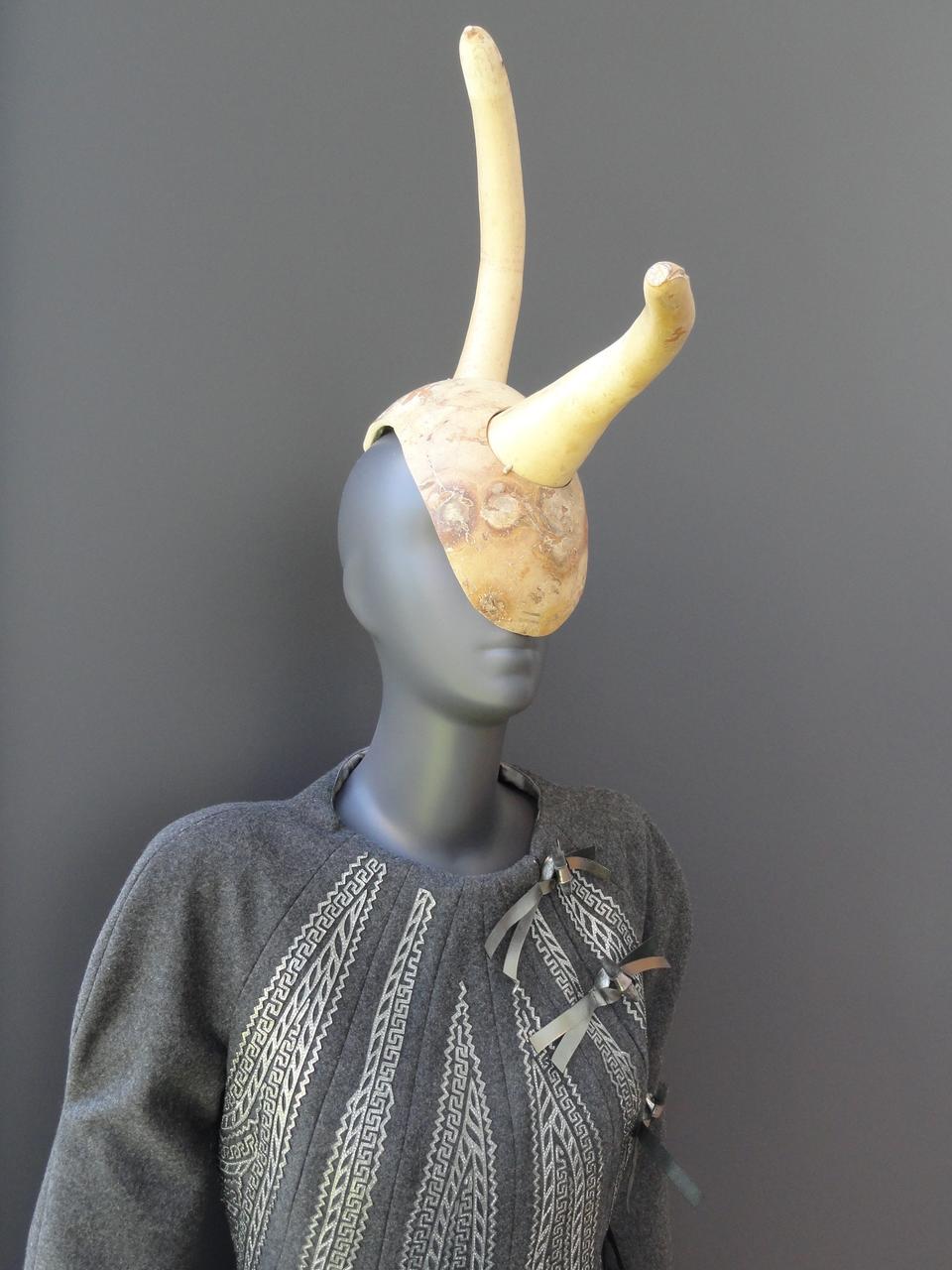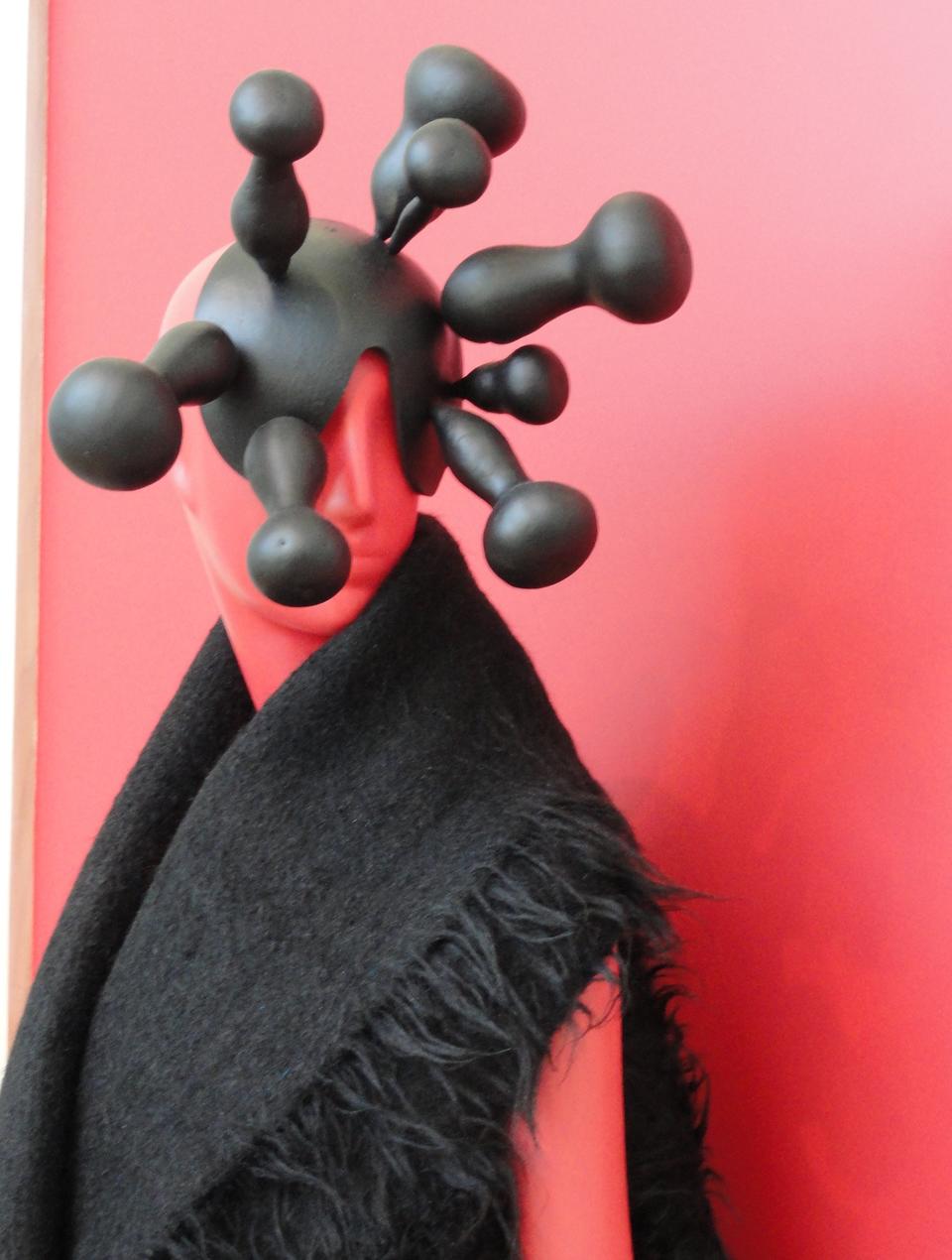Image
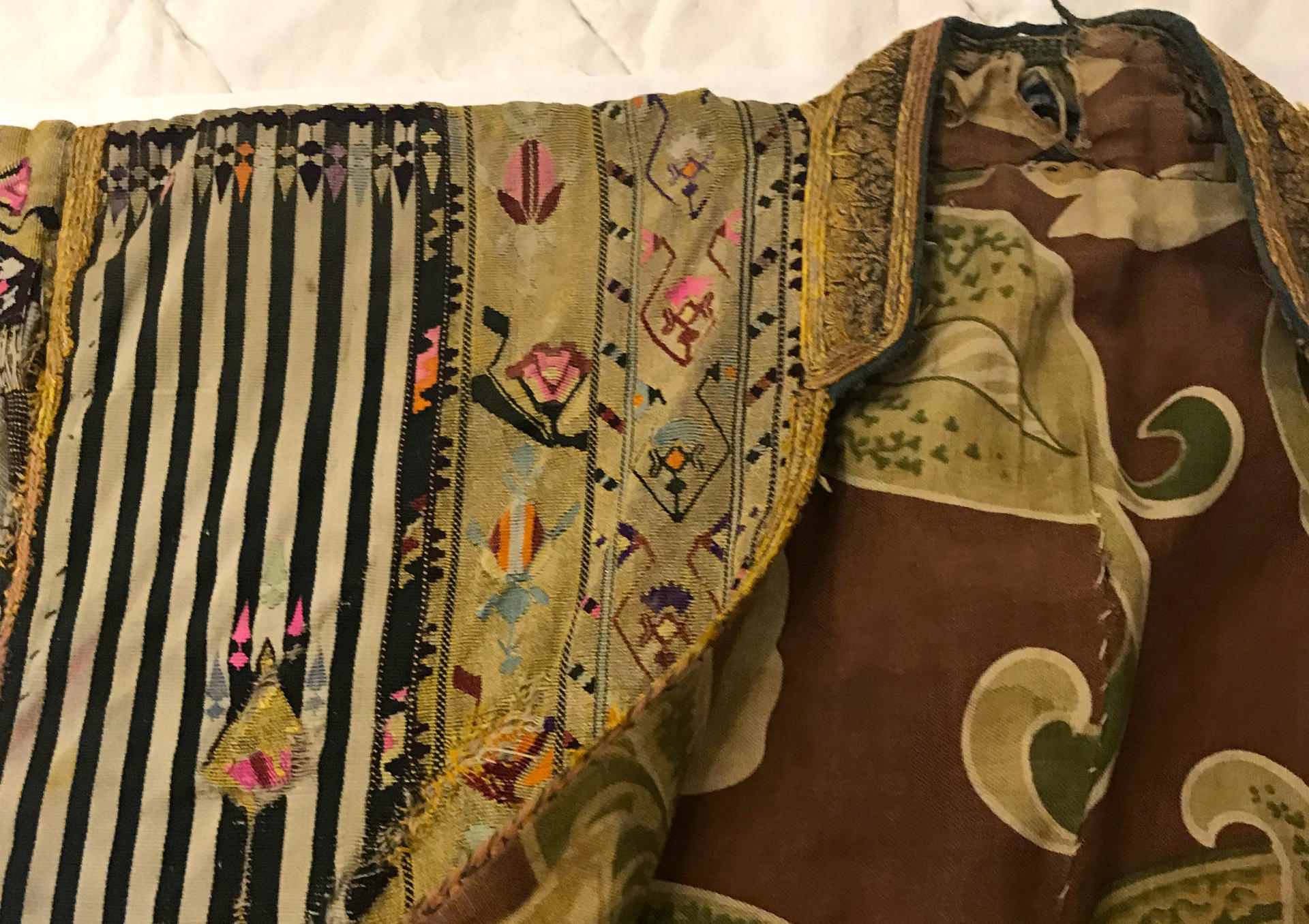
Syrian Coat, 1800s, Maker unknown. Museum of Art, RISD Collection.
Object Number: 44.234. Photo by Holly Gaboriault (2020)
ABSTRACT
Encompassing cataloged traces, ideologies and cultural practices, museum collections and institutional archives document both historical and pedagogical relationships within sites combining aesthetic pleasure, contemplation and social power. Objects within these sites are ripe with dynamics of ambiguity and materiality ‘haunted’ with the stories of creation, place and essences of lives lived through and amongst them: the hidden, the neglected, the erased. How do we recognize absences in these spaces? How do we work from absence as a point of departure for storytelling and narrative production?
A project of imagination rather than epistemology, this thesis aims to discuss cross-methodological interventions utilizing the vehicle of absence as a positive, constructive tool for historical activation and reframing voids through object-based research, artistic activism and curatorial investigation.
This work extends upon several years of independent filmmaking and curatorial documentation of the methods utilized in uncovering hidden histories and the in-between moments of material culture's storytelling process. Case studies enacted by artists and designers include Fred Wilson's reimagining collections at the Maryland Historical Society (1992), Robert Fontenot's Recycle LACMA (2009-2010), Carla Fernández’s artist-in-residency at the Gardner Museum (2013), Katarina Burin's stewardship of the Petra Andrejovna-Molnár archive, in addition to my studies at the Museum of Art RISD collection and the Rhode Island Historical Society for the awarded 2020 Maharam STEAM Fellowship.
The hierarchy of narrative is in continuous flux; and someone or something always leaves their mark. Artists, designers and makers who conduct visual research at these sites have the propensity to intervene from a place where absence is acknowledged and challenged, activating social justice and new imaginaries for future art and cultural discourses.
Video file
Image
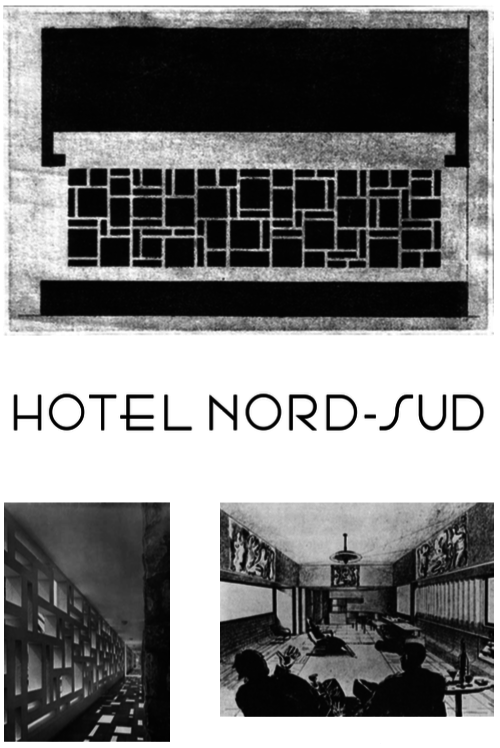
TABLE OF CONTENTS
Chapter 1: Breathing into Absence
Chapter 2: Haunting Histories and the Curatorial Narrative
Chapter 3: Strategies For the Absent Archive
3.1 Contribution and Collaboration: An Intervention by Katerina Burin
3.2 Holding Histories: The Rhode Island Historical Society
Chapter 4: Strategies For Researching Absence in Design Practice
4.1 Transcultural Collecting and the Allure of the ‘Other’: Lucy Truman Aldrich and Isabella Stewart Gardner
4.2 Object-Based Research and Activating Collections: Fenway Court and The Barefoot Designer
4.3 Object-based Research and Design Pedagogy: “Designing Traditions” Student Explorations in the RISD Museum of Art Asian Art Collection
Chapter 5: Conclusion: Where we’ve been and what we need
Image
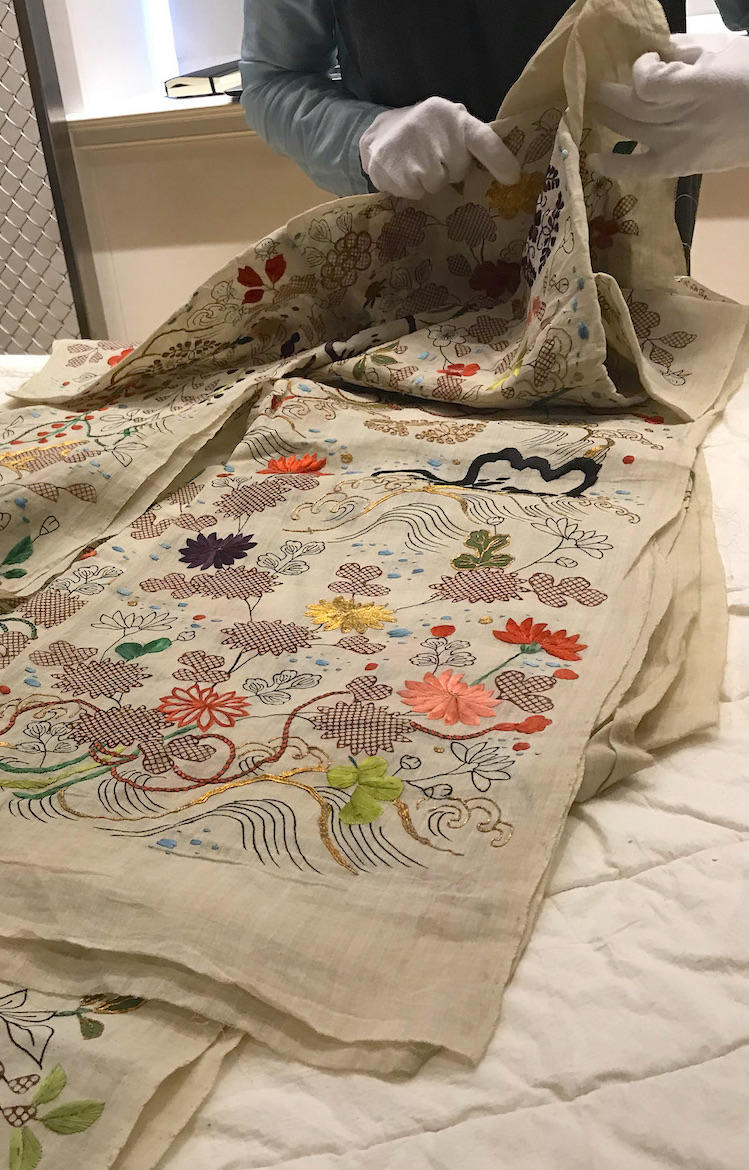
CASE STUDY
Petra Andrejovna-Molnár archive | Katarina Burin
Katarina Burin successfully embeds the early 20th century Czech architect Petra Andrejova-Molnár among her male contemporaries, accounting for all female designers who contributed to design history yet remain unknown. Modulating the dial of the real and the imagined becomes a strategy for Burin in creating materials to accompany a fictitious persona including letterhead, architectural drawings and models, furniture, ceramics, and staging interwar photographs.
Biography becomes an interventional vehicle putting authority into question, the relationship between gender and the archive, authorship and authenticity of labor. Functioning as a subversive implementation, the imagined archive allows for the capabilities to map paths of narrative disruption and transform the formerly omitted. Artists creating fictitious archives act as departures to lean into absences found the constructed archive and consider the encounter of display to what we have been told to believe as trustworthy anchors in evidence.
CASE STUDY
Camp Fire Girls archive
Rhode Island Historical Society, Providence, RI
Historical archives are privately formed and publicly sustained to geographically record and comprehend the identities of people and lived experiences through the material objects they created or consumed. The RI Historical Society costume and textile collection is housed at the John Brown House Museum, a site ripe with the interfacing diaolgues of slavery and abolition within the Brown family; and my observations found a startling need to address an absence of diversity in communities represented in addition to more visibility from objects hidden in storage and stories unaccounted for.
While researching diversification strategies in a historically white institution, I accidentally discovered the Camp Fire Girls archive containing four dresses with matching headbands, pouches and sashes (circa 1910s-1920s); photographs, journals, patches, and membership materials. Founded in 1910, the Camp Fire Girls is a youth organization for girls between the ages of 7-18 years old, who appropriated indigenous imagery for teaching girls and young women the ways of ‘Native American’ beliefs in an outdoor camp setting, without a grounded understanding of indigenous history and lifestyles, traditions, or the desire to engage in a relevant discourse with local indigenous communities.
CASE STUDY
“Designing Traditions” Student Explorations in the Asian Textile Collection Biennial
RISD Museum of Art, Providence, RI
The curatorial intentions for the 2008-2018 Designing Traditions Biennial pushed towards engaging textile design students in a discourse about inspiration, translation and appropriation working in the Costume + Textiles Collection at the RISD Museum from objects and textiles selected by curators Kate Irvin and Laurie Brewer. This hands-on method of providing access for students to obtain foundations of object-based research sought to challenge their historical knowledge and cultural assumptions, resulting in strengthening their ability to translate research into ethically informed studio practice.
A lack of awareness for cross-cultural complexities can permit one to cultivate the mystery, a practice of exoticism that feeds that fantasy, and demonstrate how we must rethink the empiricist epistemology of the visible. Embedded in studio craft and technique, the textile students were then assigned to select a piece, research and write a presentation about its context and origins, and create a response to display alongside the object of choice in the biennial exhibition.
CASE STUDY
The Barefoot Designer | Carla Fernández artist-in-residency
The Gardner Museum, Boston MA
In July 2013, Mexican fashion designer Carla Fernández arrived at the Gardner Museum to expand her process of designing, which she describes as an ongoing act of storytelling uniting the traditions of the past with the contemporary. With a background in fashion anthropology, Fernández studied indigenous clothing traditions and techniques for more than twenty years researching and cataloguing hundreds of garment designs, including ancient Mayan and Aztec designs and other pre-Hispanic traditions at risk of being lost.
The Gardner Museum is an assemblage of objects, paintings, textiles and artifacts from several centuries collected in the late-19th century by Isabella Stewart Gardner. In 1901 she would publicly open the inverted Venition palazzo across from the MFA Boston she commissioned to house her collection, where objects extracted from their global context sat amongst one another with no context given (the museum contains no labels on the walls to intercede with ‘aesthetic pleasure’). Fernández examined the collector’s choice of display to find where the intersections of consciousness and complexities of colonialism respond, activate, and create spaces where identity and identification blur. The Barefoot Designer brings forth her research in an exhibition incorporating fashion, dance, performance, and traditional Mexican craft workshops.
SELECTED BIBLIOGRAPHY
Appadurai, Arjun. “Disjuncture and Difference in the Global Cultural Economy.” Essay. In Global Culture: Nationalism, Globalization, and Modernity: a Theory, Culture & Society Special Issue, 7:295–310. London: Sage Publications, 1990.
- The Social Life of Things: Commodities in Cultural Perspective. Cambridge; New York: Cambridge University Press, 1986.
Bakhtin, Mikhail. The Dialogic Imagination: Four Essays. Austin, TX: University of Texas Press, 1993.
Bismarck, Beatrice von and Meyer-Krahmer, et al. Cultures of the Curatorial: Curatorial Things. Sternberg Press, 2012.
Burin, Katarina. 2016. Katarina Burin. Contribution and Collaboration. The Work of Petra Andrejova-Molnar and Her Contemporaries. Köln: Buchhandlung Walther König.
Derrida, Jacques. Of Grammatology. United States: Johns Hopkins University Press, 2013.
- Spectres of Marx: The State of the Debt, the Work of Mourning and the New International. New York, NY: Routledge, 1993.
Fernández, Carla. 2013. El manual de la diseñadora descalza / The Barefoot Designer: A Handbook. Mexico City, Mexico: Conaculta.
Foucault, Michel. The Archaeology of Knowledge. United Kingdom: Knopf Doubleday Publishing Group, 2012.
Gordon, Avery F. Ghostly Matters: Haunting and the Sociological Imagination. Minneapolis, MN: University of Minnesota Press, 2008.
Karp, Ivan, and Steven D. Lavine. Exhibiting Cultures: the Poetics and Politics of Museum Display, Washington, D.C.: Smithsonian Institution Press, 1991.
Lubar, Steven. Inside the Lost Museum: Curating, Past and Present. Cambridge, MA: Harvard University Press. 2017.
Marstine, Janet. 2010. New Museum Theory and Practice: an Introduction. Malden, MA: Blackwell.
- Critical Practice Artists, Museums, Ethics. London: Taylor and Francis. 2017.
Merewether, Charles. The Archive. London: Whitechapel. 2006.
Otto, Elizabeth. Haunted Bauhaus: Occult Spirituality, Gender Fluidity, Queer Identities, and Radical Politics. Cambridge, MA: The MIT Press, 2019.
Tuhiwai Smith Presidential Lecture, Martinos Auditorium, Granoff Center for the Arts, Brown University, Providence, RI. February 20, 2020.
Young, James O. “Profound Offense and Cultural Appropriation.” The Journal of Aesthetics and Art Criticism, vol. 63, no. 2, 2005, pp. 135–146.
Yoshihara, Mari. Embracing the East White Women and American Orientalism. Oxford University Press, 2003.

